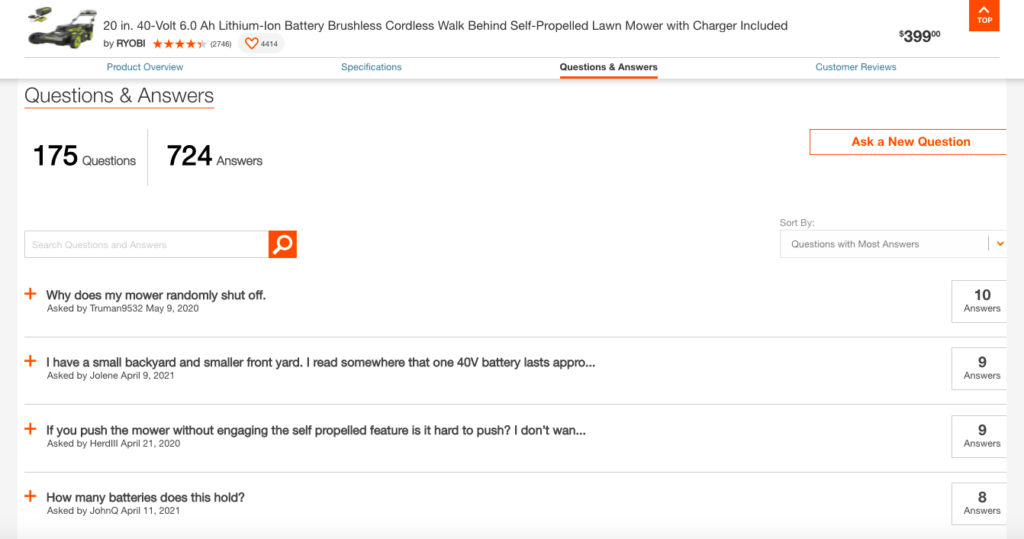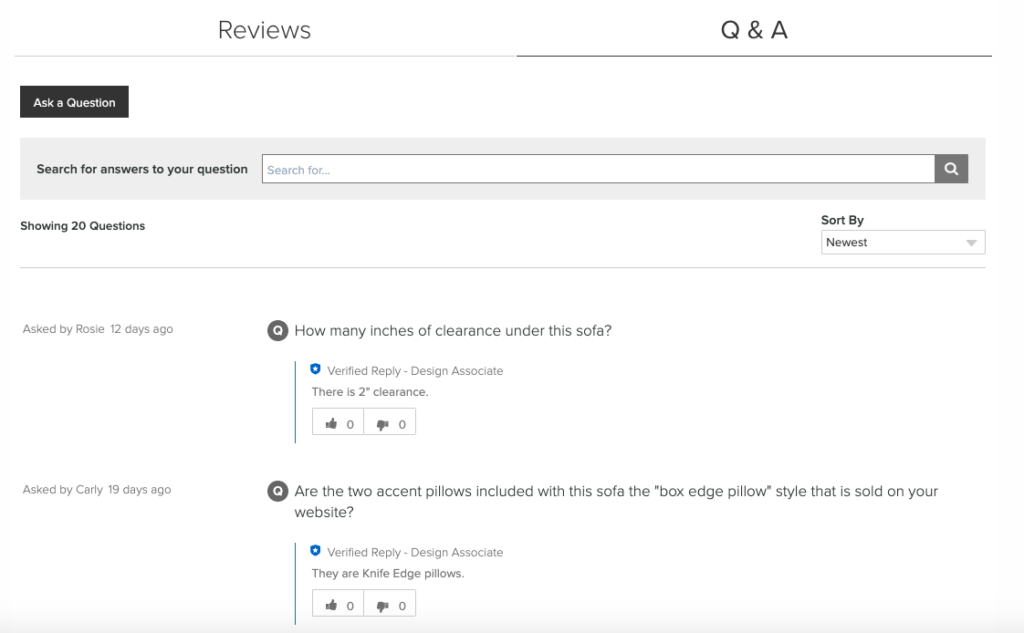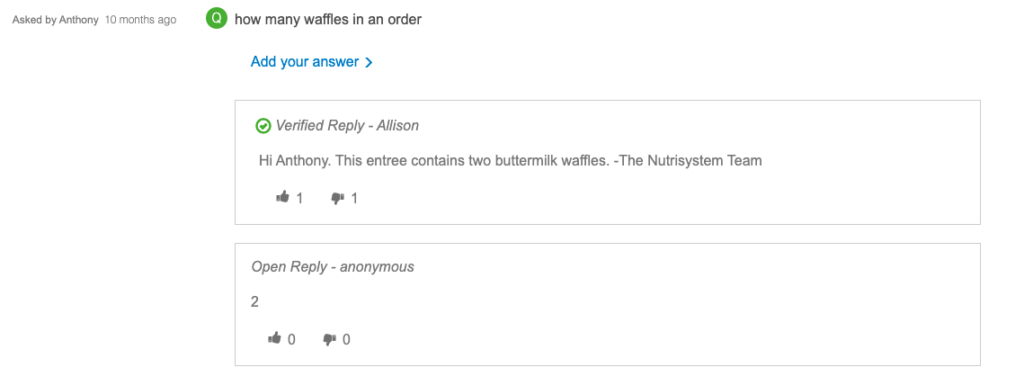The Brand’s Guide to Managing Product Questions and Answers

By now, we’ve all seen plenty of headlines about the growth of eCommerce traffic and sales in the midst of the COVID-19 pandemic. But it’s worth reiterating.
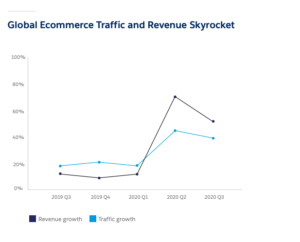 According to Salesforce’s State of Commerce Report, eCommerce revenue increased 75% year over year in the second quarter of 2020 and 55% in the third quarter. And per the same report, 56% of organizations expect the majority of their revenue to come from digital channels within the next three years.
According to Salesforce’s State of Commerce Report, eCommerce revenue increased 75% year over year in the second quarter of 2020 and 55% in the third quarter. And per the same report, 56% of organizations expect the majority of their revenue to come from digital channels within the next three years.
As a growing number of consumers browse and buy online, it’s essential to provide them with digital tools and experiences that help them connect with your brand — and make informed purchase decisions. One way to do that is to give shoppers a way to browse through previously asked customer questions, ask their own, and get fast, accurate answers. A growing number of customer-centric brands are doing just that by leveraging product questions and answers (Q&A) software.
In our most recent blog, we explored what Q&A is, and some surprising things you might not know about this type of user-generated content. In this blog, we’ll discuss why Q&A matters for brands and consumers alike — and steps you can take to more effectively manage this content to see the biggest ROI from your efforts.
Why Q&A Matters
As eCommerce continues to grow, Q&A has become an essential tool for consumers and brands alike.
Q&A Empowers Shoppers to Make Better Purchase Decisions
No matter how much information is at their fingertips, some shoppers will still have questions that stand in the way of a purchase. This is especially true when a consumer is shopping online and doesn’t have the opportunity to touch and see a product before making a purchase (and ask a sales associate any outstanding questions).
By providing quick answers to questions via Q&A, you’re helping your shoppers more easily determine whether a product will (or won’t) meet their needs. Let’s say a consumer is shopping for a new table for their patio. They find a product they love on Wayfair.com, but they’re not sure if it’s rust-resistant. So they submit a question through Q&A and get a quick answer confirming that the product is, indeed, rust-resistant. So they confidently add it to their online shopping basket.
Q&A Boosts the Bottom Line for Brands
Q&A also benefits brands in a number of important ways.
For starters, Q&A is a source of fresh, keyword-rich content — which search engines love. So a steady stream of Q&A can have a positive impact on your search engine ranking. PowerReviews data tells us that product pages with answered questions can experience an 88% average increase in traffic!
Brands can also expect a boost to conversion rates when they empower shoppers to browse questions that have already been asked, post their own questions and get speedy answers. A recent analysis from PowerReviews found that there’s a 157.1% conversion lift when shoppers interact with the Q&A feature of a product page. 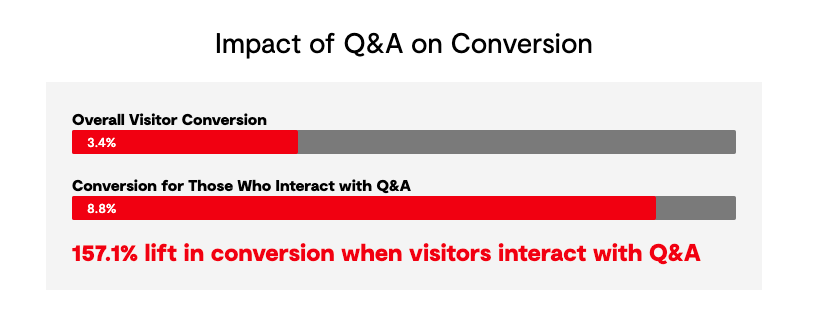
Q&A also helps shoppers choose the right products the first time, which can reduce the amount of merchandise that’s returned to you. According to Bazaarvoice, brands that consistently answer customers’ questions via Q&A can experience reduced return rates, as well as a 50% decrease in support center costs.
What’s more, Q&A provides you with opportunities to make authentic connections with your customers and deliver great brand experiences. And by consistently providing great answers to customer questions, shoppers will see that you’re a responsive brand — which will have a positive impact on your online reputation.
How to More Effectively Manage Customer Q&A
Q&A is an important tool online shoppers rely on to make confident purchase decisions. And it’s becoming even more important as eCommerce continues to grow.
Ready to start managing customer questions and answers — but don’t know where to start? Let’s explore the steps necessary to effectively manage Q&A and reap the rewards of doing so.
Add a Q&A Feature to Your Product Pages
If you don’t have Q&A software on your eCommerce site, now’s the time to add it. Many of the major user-generated content providers (and our awesome partners), including Bazaarvoice, PowerReviews and Yotpo can help you get Q&A up and running on the product pages of your own website.
If you sell your products through retailers, each retail partner will have a Q&A provider — often from one of the companies mentioned earlier. And if you sell on Amazon, you’ll automatically have Q&A included on your product pages.
Determine Who Can Answer Customer Questions
On some brand websites, customer Q&A is only answered by those who work for the brand. This is the approach taken by Room & Board.
However, other brands, such as Nutrisystem, also allow previous customers to answer questions.
It’s up to you (and the capabilities of your Q&A vendor) who can answer questions on your own website. So determine what makes the most sense.
Remember: if you sell your products through retailers, the decision is typically made by the retailer. And by default, Amazon allows answers to questions from sellers, manufacturers or other customers who bought the product.
Establish SLAs
Your brand probably already has Service Level Agreements (SLAs) in place that determine how quickly you respond to customer inquiries via email and other channels. But be sure to establish a Q&A-specific SLA.
How quickly should you respond to Q&A? While there’s no one size fits all answer, time is of the essence. In fact, in an ideal world, shoppers would get their questions answered before they left the product page. This might seem like a tall order, but if you use Reputation Studio from 1440, your Q&A from all sources is consolidated into a single platform. That way, your teams are better positioned to commit to speedy SLAs (and deliver on them).
Finally, remember that your retail partners may already have established SLAs for Q&A. Meeting these SLAs is an important way to deliver great experiences and remain in good standing with your retail partners.
Create Internal Approval Processes
You likely have multiple team members answering customer questions submitted through Q&A. Of course, you want to empower these employees to answer questions and deliver great service. But there are instances when it makes sense for a manager to review and approve Q&A answers to ensure they’re on-brand and accurate.
Determine what those instances are. For example, you might establish a rule that any questions that include the word COVID require manager approval. Or, if you’re a health and beauty brand it makes sense that answers to questions that mention words like pain, rash or itch are automatically routed for manager approval before being posted.
Set up Rule-Based Routing
Consumers ask a variety of different types of questions via Q&A. While some ask about products, others ask questions about things like shipping and returns. Sometimes, shoppers even post questions after making a purchase. For example, this shopper posted a question on a product page for a watch, asking how to replace a damaged screen.
Set up rule-based routing so questions always go to the team or employee best equipped to answer them. For example, you might set things up so product-specific questions go to one team, and post-purchase, service-related questions are automatically routed to a different team.
Monitor Questions and Answers Across Channels
Once you’ve got Q&A up and running on your website and you’ve established the right processes and procedures, it’s time to start monitoring Q&A across all of your sales channels. But that’s easier said than done, especially if you sell through a number of different channels. It can be easy for questions to slip through the cracks.
Consider using a product like Reputation Studio from 1440, which consolidates all questions submitted via your own website, retail partners, Amazon and other sites into a single platform. That way, you only need to log onto one site. And you never have to worry about missing a question.
Provide Fast, Accurate Answers
Forrester research tells us that over half of shoppers will abandon an online purchase if they can’t find a quick answer to a question. So make it a priority to answer customer questions submitted through Q&A — fast!
Be sure to meet (or exceed) the SLAs you established. Doing so will help your shoppers make informed purchase decisions, and it’ll help you boost conversion rates.
It can be challenging to provide fast (ideally, real-time) answers across all channels where shoppers submit questions. But remember, if you consolidate Q&A using a tool like Reputation Studio, it’s much easier.
Gain Insights from Shopper Questions and Answers
Customer-centric brands consistently strive to better serve their customers. And the good news is, regularly analyzing customer questions and answers is a great way to identify ways to improve your products and digital experiences.
For example, if you’re a furniture brand and notice several shoppers asking what’s included with a specific product, there might be an opportunity to revisit your product description to make it more clear. You’re likely to reduce returns by doing so. 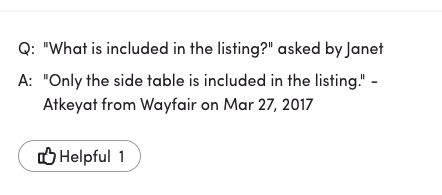
Analyzing customer questions (and answers from previous customers, if you allow it) can also help you understand what shoppers like about your products and what could use some improvement. For example, a brand that sells a stand mixer on Amazon might notice a lot of customers posting questions asking how to replace a broken whisk attachment. This is an opportunity for the brand to work with the manufacturer to improve the product.
Take Control of Your Q&A Across Channels to Boost Your Bottom Line
No matter how comprehensive your product descriptions, some online shoppers will still have questions that stand in the way of a purchase. And as eCommerce continues to grow, more shoppers depend on product Q&A to get fast answers to these outstanding questions.
Make it a priority to manage your Q&A. By doing so, you’ll increase traffic, boost conversion, reduce returns and build a solid online reputation.
